The first axial flow jet engine.
The Avon I have is a Mk 12201 (RA.21) which is from a twin seater (side by side) Hawker Hunter aircraft. The Avon was decommissioned in 1992 with just over 30 hours flight time, weighing at just over a Ton and producing in the range of 8,000 Lbs of thrust.

Here’s my Avon at the storage facility, I have to thank my friend, Paul Davidson for his advice on this engine as well as Keith Smith, the nice chap that is selling it. As you can see its all bagged up and covered with Silicon beads to absorb the dampness that forms in the bag. Cant wait to get it home.
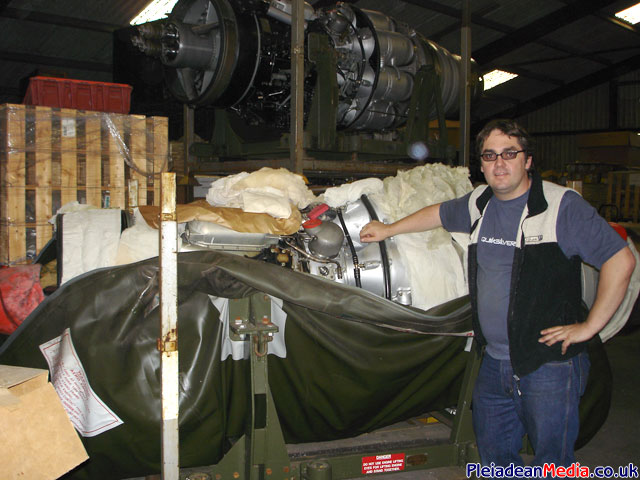
My second most popular view of a gas turbine engine – the Inlet, this image shows the variable Inlet guide vanes.
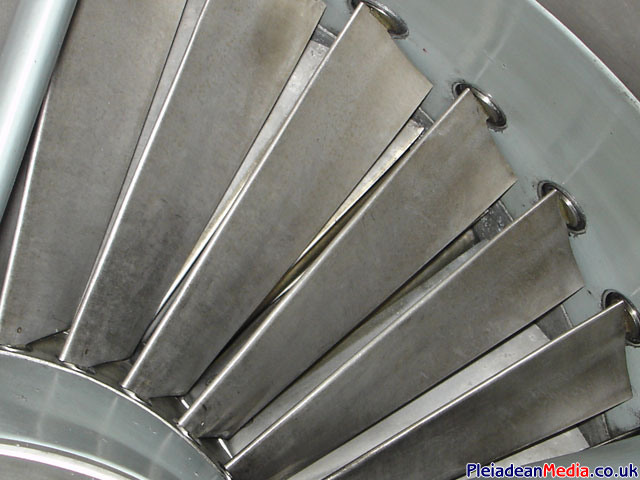
My favorite view of a gas turbine. The business end! Have you ever seen such a beautiful turbine wheel? I know I need to get a life, as I’m told daily by my girlfriend.
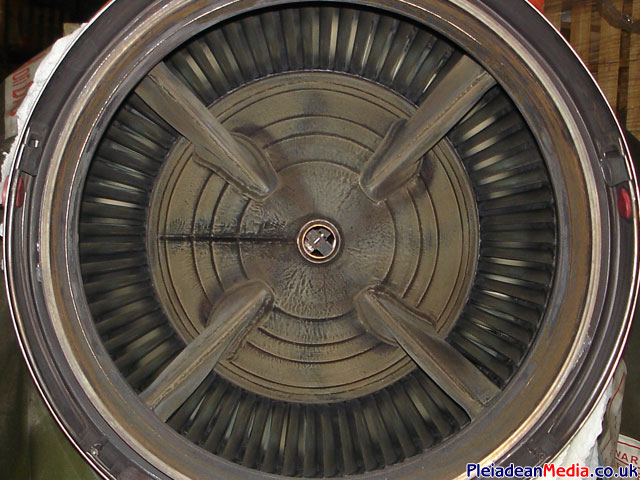
Loaded on the trailer and ready to do the 4 hour journey home to shropshire. No problems on the way back, just had to take it easy, fuel consumption on the 4×4 was up lots as you would expect.
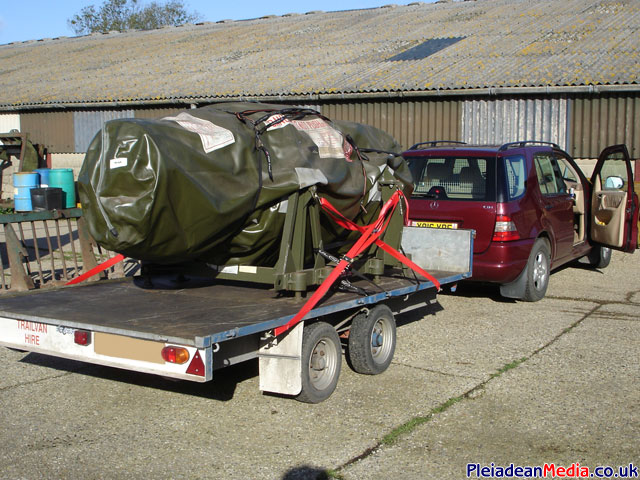
Now back at home the first job is to remove the cartridge starter shroud so that the new electric starter shroud can be fitted. I have to say that this was quite a mucky job as the residue form the propellant forms a sticky black gunge.
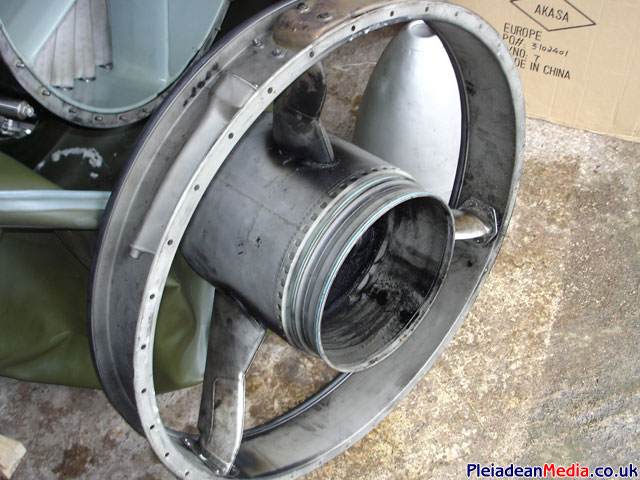
This image shows the assy in pieces. The exhaust tubes and outer frame will still be used and I will probably make a waster paper bin for the office with the shroud.
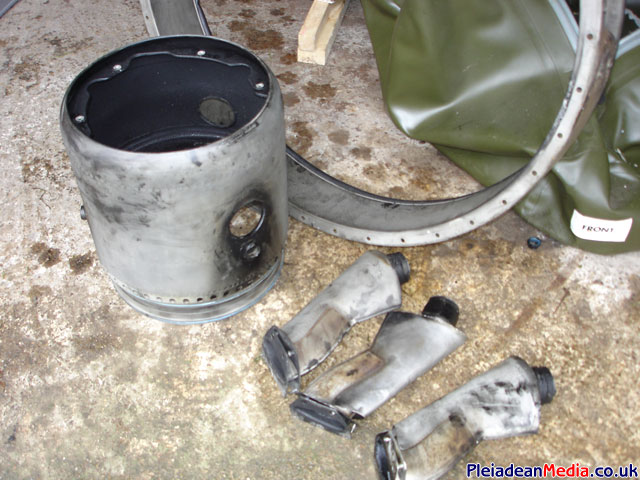
Now you can see the transportation blanking plate. Once removed this is where the starter will be bolted to. The cable with the red cap is the cartridge igniter loom which will no longer be used.
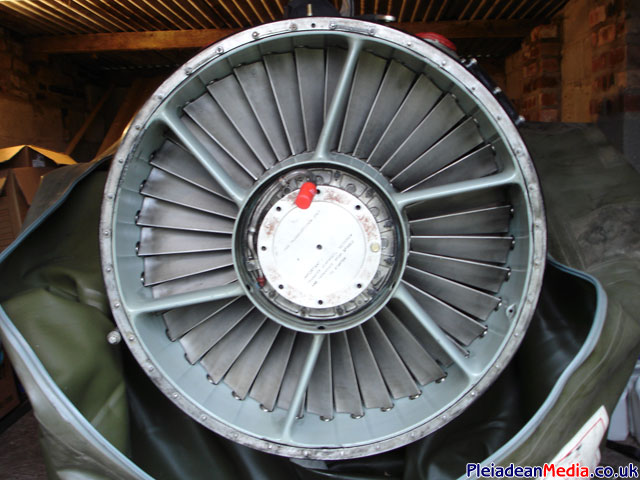
This is the reverse side of the blanking plate showing the gear adapter which will be removed and bolted on to the starter motor spline. This is on the blanking plate to stop the turbine rotating while in transit as it locks the gear assy up.
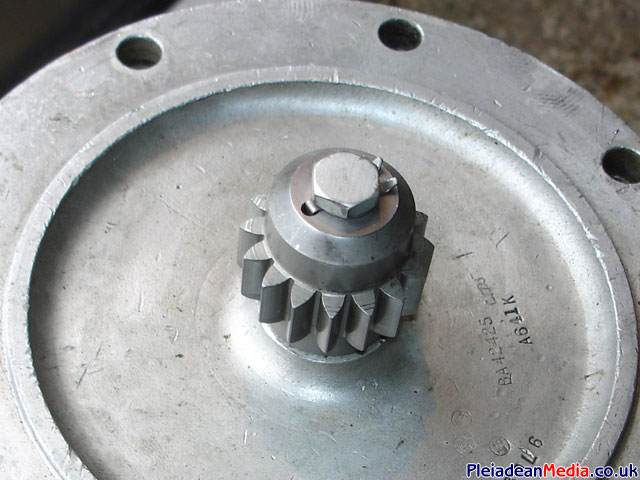
A view of the epicyclic ratchet assy that mates with the starter.
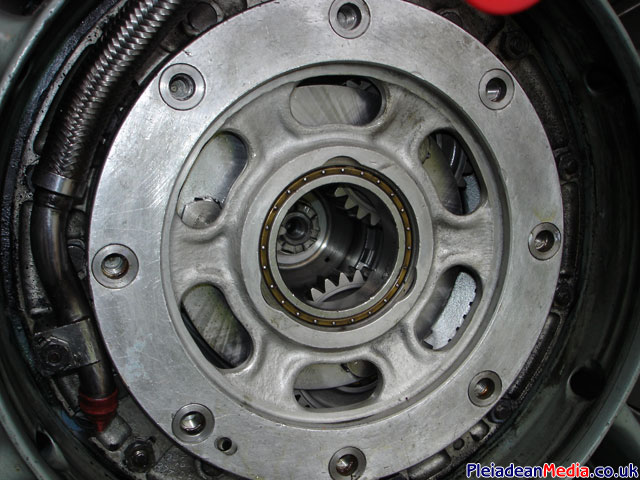
This is what a brand new 50 year old starter motor looks like when bolted on to the Avon without the covering shroud. For its size, its a really heavy piece of kit.
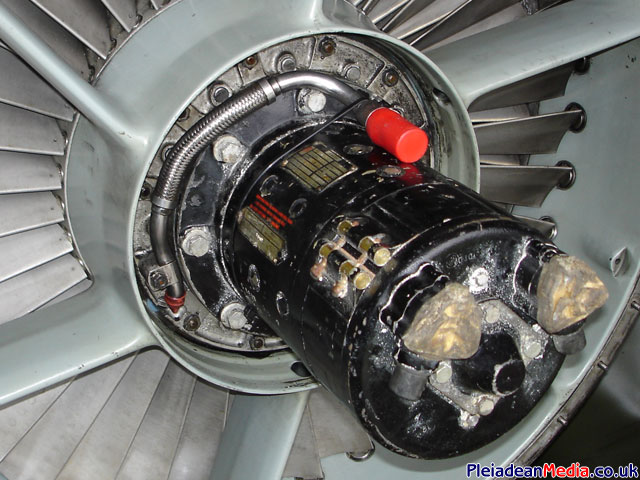
Electric starter shroud fitted, though a proper internal fixing plate will still have to be fabricated to hold it in place , a job for another day.

Nose cone fitted, looks like a battle ship shell bolted on to the end, What a size!!
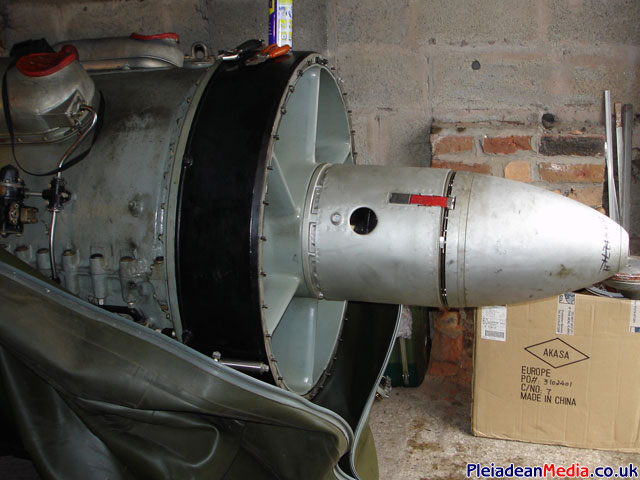
This is a minor cause of concern for me as there is a small feather stuck in the side of one of the inlet guide vanes. There is no apparent damage to the blades, but I presume that the engine has had a bird strike. I would imagine that it would have been a small bird, possibly like a blue tit or something similar.
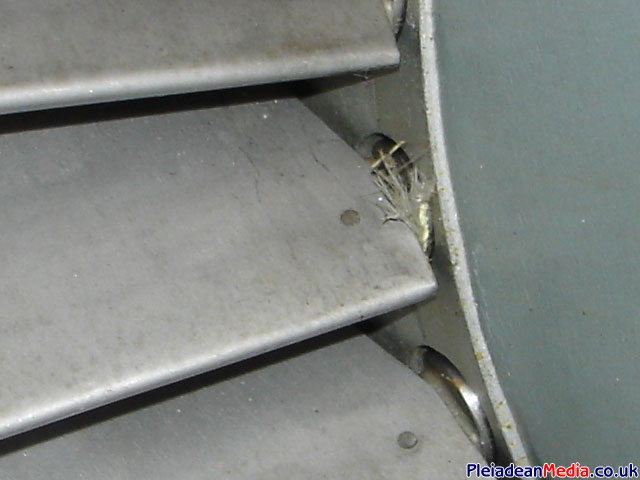
The axles off an old horse box trailer will help make a basic transportation trolley for moving the Avon around the workshop. Here you can see them being removed with the help of a JCB and a Gas Axe. Thanks to Heidi for the donation.
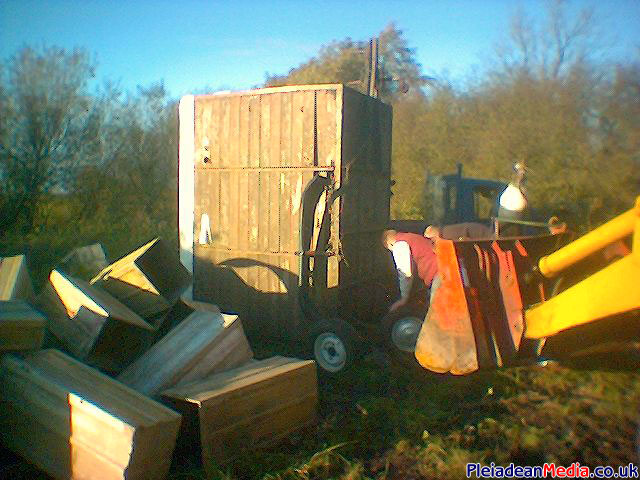
There we go, the basic trolley completed, it needs a frame making and a coat of red oxide. I will get some new tyres for the rear axle and then we are away.

Nice view of the engine. The anti-icing pipework can be clearly seen at the front of the engine.

Another nice view of the engine.
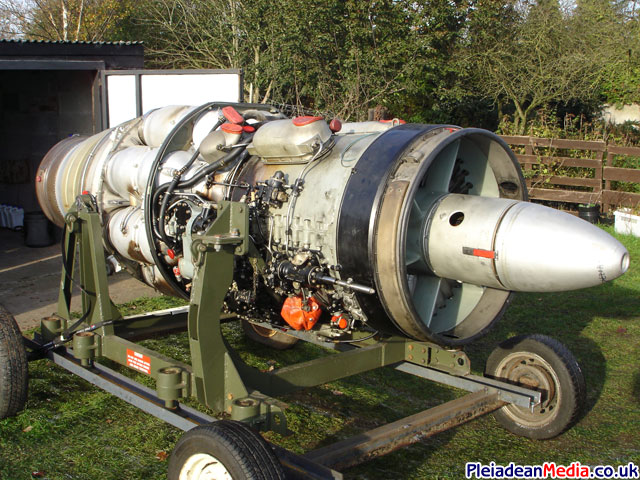
Some of the eight combustion cans.
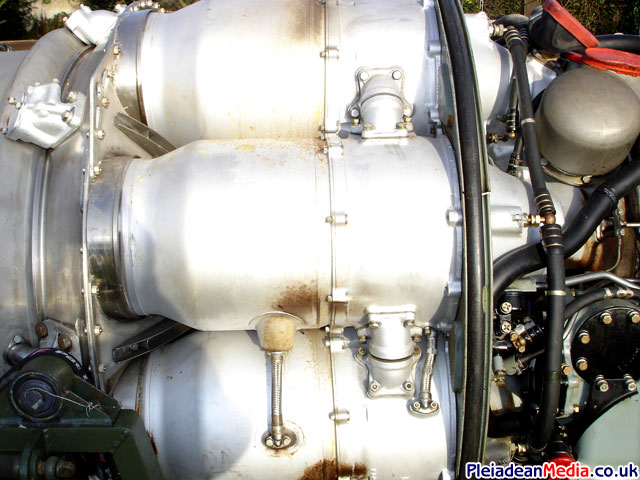
Close up of one of the fuel injectors.
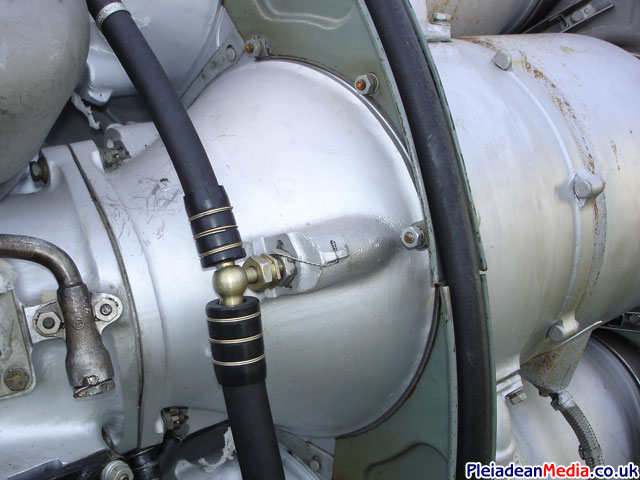
Fuel Pump which is on the right hand side of the engine.
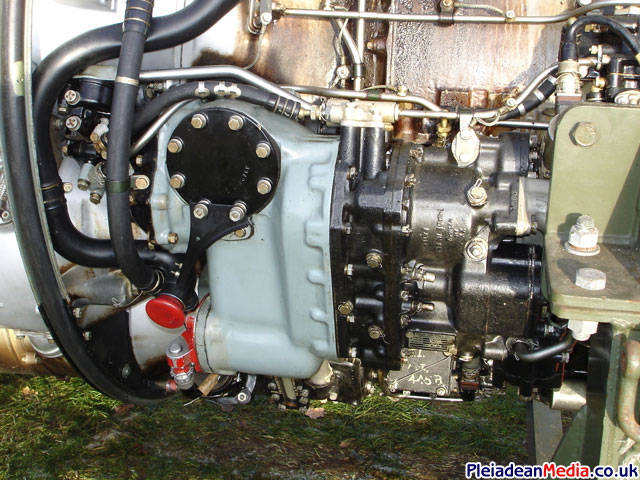
This is the PV Ram that controls the position of the Inlet Guide Vanes. The ram is controlled by fuel pressure.
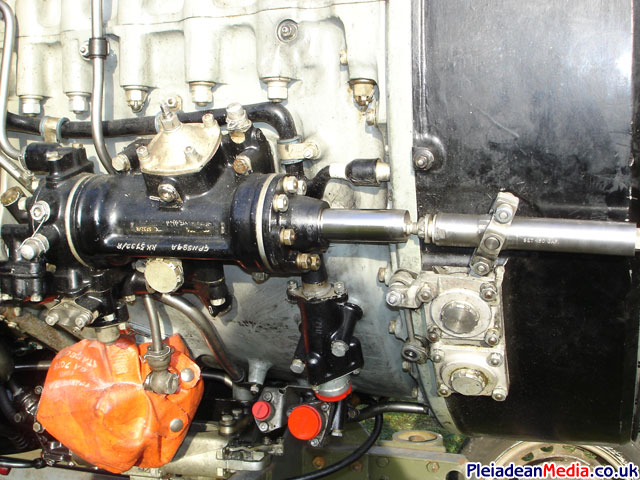
Starboard side oil filler & oil level sight glass. The red blank plate top left of this picture is where the Tacho Generator would normally be attached.
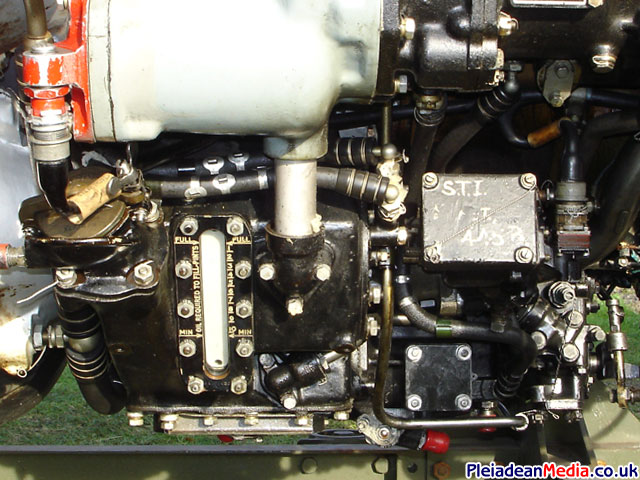
Port side oil filler and oil sight glass.

Here is a picture of the Waste Paper Bin that I warned you I was going to make out of the Cartridge Starter Shroud. Power washed and cleaned its a beauty.
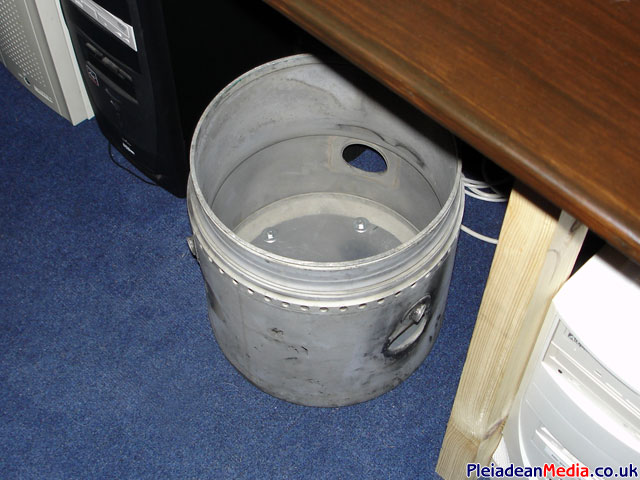
My Car, Seren the Horse and Arnold the Avon all living in harmony with each other. Nice.

